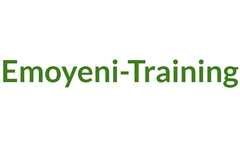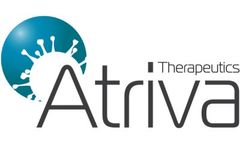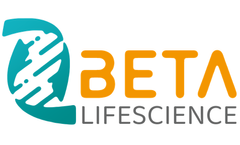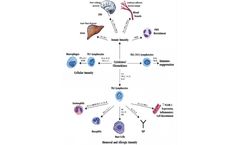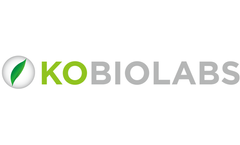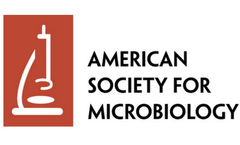Necrosis Factor Articles & Analysis
27 articles found
Simple Summary The present study investigated possible administration of pectin derived from apple pomace as a beneficial and cost-effective feed additive to be used in trout culture. To achieve the aim, a range of parameters were measured including immune parameters (both at physiological and molecular levels), growth performance and digestive enzyme activity. The results showed promising ...
Some of the primary classes include interleukins (IL), interferons (IFN), tumor necrosis factors (TNF), colony-stimulating factors (CSF), chemokines, and growth factors (GF). ...
Th precursor cells are regulated by different cytokines and transcription factors and can differentiate into CD4+ T cell subsets such as Th1, Th2, Th17 and Treg cells. ...
Upon activation, it potentiates the production of pro-inflammatory cytokines, such as tumor necrosis factor-alpha (TNF-α), interleukin-1 beta (IL-1β), and interleukin-6 (IL-6), thereby exacerbating the inflammatory cascade. ...
Caplacizumab targets von Willebrand factor (vWF), inhibits the interaction between vWF and platelets, and is indicated for acquired thrombotic thrombocytopenic purpura (aTTP) bacilli. Caplacizumab was initially approved for marketing by the EMA in September 2018, and was subsequently approved for marketing by the US FDA, Japan PMDA and other drug regulatory agencies.Ozoralizumab ...
Linker selection is one of the key factors in PDC design. Linkers need to balance stability and release efficiency. ...
They induce an antiviral state in neighboring cells, hindering viral replication. Tumor Necrosis Factors (TNFs): TNFs are potent proinflammatory cytokines that are involved in a variety of immune responses, including inflammation, apoptosis, and cell differentiation. ...
Cytokines, including interleukins, tumor necrosis factor, interferons, chemokines, colony-stimulating factors, growth factors, etc., are involved in the activation, proliferation, differentiation and survival of various immune cells. ...
The recent COVID-19 pandemic again highlighted the urgent need for broad-spectrum antivirals, both for therapeutic use in acute viral infection and for pandemic preparedness in general. The targeting of host cell factors hijacked by viruses during their replication cycle presents one possible strategy for development of broad-spectrum antivirals. ...
Luminex multiplex assays is a multi-functional, multi-indicator parallel analysis system that organically integrates color-coded beads, laser technology, applied fluidics, the latest high-speed digital signal processor and computer algorithms to create a high degree of specificity and sensitivity for multi-factor detection. It can be widely used in immunoassay, nucleic acid ...
Cytokine Classification Cytokines are categorized into various subtypes, including interleukins (IL), interferons (IFN), tumor necrosis factor (TNF), colony-stimulating factor (CSF), chemokines, and growth factors (GF). ...
Classification and function Cytokines can be classified into different groups based on their functions, including: interleukin (IL), interferon (IFN), tumor necrosis factor (TNF), colony stimulating factor (CSF), chemokine family, growth factor (GF), and TGF-β family. ...
In a mouse model of skin herpes infection, IL-17C can induce neuronal growth in a manner similar to NGF (nerve growth factor). It has also been reported that in mouse models of psoriasis and atopic dermatitis, the absence of IL-17C significantly reduces the inflammatory response. ...
As the name suggests, TSLP was initially identified in the mouse thymic stromal cell line Z210R, as a factor that promotes the proliferation and development of immature B cells. Subsequently, TSLP was found to function as a co-stimulatory factor for thymic cell proliferation and as a lymphopoietin[1]. Although the homology between human and mouse TSLP is low, ...
Cytokines are small soluble proteins that are secreted by immune cells and tissue cells to play a regulatory role between cells, including interferon (IFN), interleukin (IL), chemokines, colony-stimulating factors (CSF), tumor necrosis factors (TNF) and so on. Cytokines function in autocrine, paracrine or endocrine forms, and can regulate cell ...
Tumor necrosis factor-α (TNF-α) Depending on the cell source and molecular structure, it can be divided into alpha and beta types. ...
Tumor Necrosis Factor Alpha (TNF-a) is a potent cytokine that is over-expressed by cells during chronic intestinal inflammation. ...
More than 200 types of human cytokines have been identified, which can be generally classified into interleukins, interferons, tumor necrosis factors, colony-stimulating factors, chemokines, growth factors, etc. according to their structure as well as function. ...
The incidence rates of ALDs are strongly affected by several risk factors such as the quantity and pattern of alcohol consumption, gender, ethnicity, diet, and host genetic factors (O'Shea et al., 2010, Stickel and Hampe, 2012). ...
Using a red fluorescence fusion protein, we localized AfMnt1 in compact, brefeldin A-sensitive organelles that most likely represent fungal Golgi equivalents. The tumor necrosis factor alpha response of murine macrophages to hyphae was not affected by the lack of the afmnt1 gene, but the corresponding mutant was attenuated in a mouse model of infection. ...

